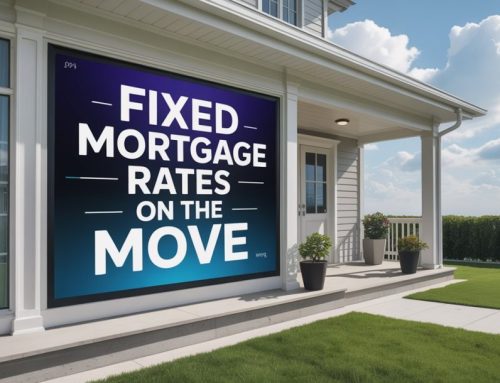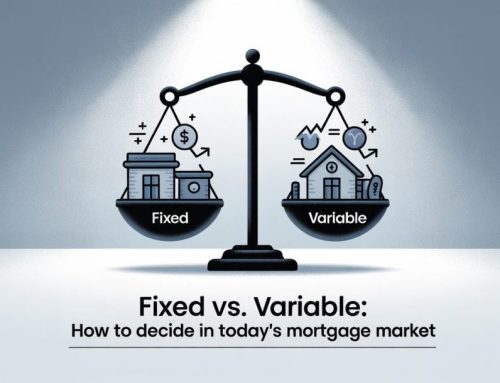Many people request a 25 year amortization because it’s considered standard, without much other thought. They may associate a 30 year amortization with paying more interest, and that it will take an additional 5 years to have their mortgage paid off in full. This is not necessarily the case, as I’ll discuss later in this blog.
Choosing a 25 year amortization will often get you a lower mortgage rate, but this doesn’t necessarily mean that this will be your best choice. This is where you’ll need to ask yourself what is most important to you….
Paying less interest? Or having a lower mortgage payment?
Paying less interest is definitely appealing, however there are many who are okay with paying more interest over the term if it means less money out of their pocket today. In other words, having a lower mortgage payment.
There can be a number of reasons why a lower payment can be more attractive than paying less interest:
- Tight personal finances
- Future employment / income uncertainty
- Investments
- Future purchase of rental property
Tight personal finances
Some people may be living paycheque to paycheque, and with their personal financing being tight, having those extra dollars in their pocket at the end of the month can make the world of difference.
Employment / income uncertainty
If you’re concerned about your job stability, or are considering starting a new business, then lowering your payments to help build your cash reserves can be a big help.
Investments
While many have the goal of paying their mortgage off as soon as possible, there are many who prefer to have the increased cash flow to invest at a higher return. With mortgage rates hitting new historical lows, there are savvy investors would much invest the additional funds at a higher return.
Future purchase of rental property
When purchasing an investment property, only 50% of the projected rental income can be used towards qualification. This can make the purchase of a rental property more challenging for many. By lowering your mortgage payment on your primary residence, you can qualify for a larger mortgage on the future purchase.
25 vs. 30 Year Amortization
Let’s say you need a mortgage for $500,000. You have the choice of a 25 year amortization at 1.79%* or a 30 year amortization at 2.04%*. Here’s how the numbers look on each option:
25 year amortization
Mortgage rate: 1.79%*
Monthly payment: $2,066.93
Interest over 5 years: $40,999.48
Ending balance after 5 years: $416,983.68
30 year amortization
Mortgage rate: 2.04%*
Monthly payment: $1,855.95
Interest over 5 years: $47,658.30
Ending balance after 5 years: $436,301.30
Even though the rate difference in this case is fairly significant at 0.25%, the option with the 30 year amortization has a monthly payment that is $210.98 lower. This can make a fairly significant impact on cash flow, and can make a big difference to a financially struggling family.
The difference in payment works out to $12,658.80 over the 5 year term, but your mortgage balance after 5 years will be $19,317.62 higher. This is where you need to decide what is most important to you. Keeping the additional $12.6K in your pocket, or having a mortgage balance that is $19.3K lower at the end of your term.
How To Use A 30 Year Amortization To Your Advantage….. Without Paying Additional Interest
Note that the rate options with 25 and 30 year amortization are not always this far apart, and in some cases there is no rate difference at all. Every situation can be a bit different. Whenever the rate is the same regardless of amortization, I will generally suggest 30 years. The reason is that it can increase your flexibility, without having to pay any additional interest over the 25 year option. Let me explain further.
You’ll first need to select a mortgage with a 30 year amortization and flexible prepayment privileges. You can then use your prepayment privileges to increase your payments to match the
payments of the 25 year option. If you do this from the first payment, and maintain this throughout the 5 year term, then your mortgage will be 100% equal to having a 25 year amortization. After all, amortization is the amount of time it takes to pay a mortgage down to zero, assuming equal payments. As soon as you make any additional payment of any size, be it a lump sum payment, or an increase to your scheduled payments, you’re lowering your effective amortization.
Even choosing accelerated biweekly vs. monthly payments will knock a 25 year amortization down to 22 years 6 months at today’s rates. If you make even a single lump sum payment, the amortization drops further. The amortization could be 100 years (if such a thing were possible) and it wouldn’t matter if you change your payments to match the shorter amortization. The amortization written on your original mortgage commitment does not mean a thing when it comes to how much interest you pay, as long as you make the change from your very first payment. As far as additional interest costs… it’s 100% meaningless.
The Benefit
The benefit is that you can revert back to the lower payment at any time during the term if you find yourself in any of the above situations, or any other situation that may require increased cash flow. It’s like having free insurance!
The Drawback
The only real drawback to this technique is that you’re cutting into your prepayment privileges. The vast majority of homeowners aren’t coming anywhere close to maximizing them anyway. If prepaying your mortgage off quickly is important to you, then you’ll want to ensure that you choose a mortgage that has flexible and aggressive prepayment privileges.








Leave A Comment